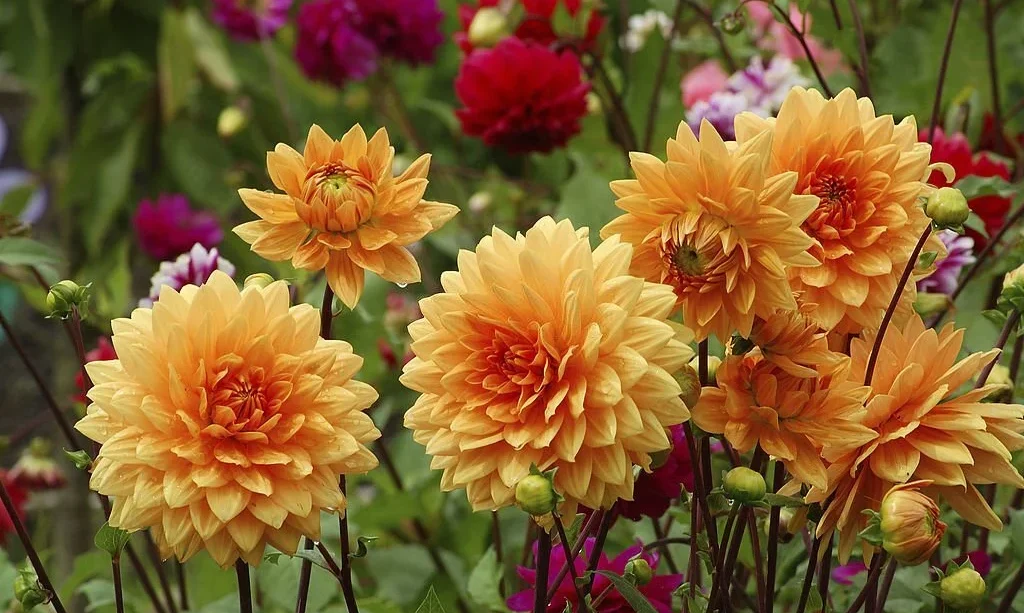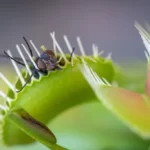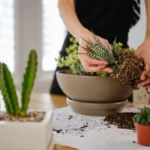Have you ever wondered how to make your dahlias look bushier and produce more vibrant blooms? The secret lies in a simple technique called pinching. Pinching dahlias involves removing the top growth of the plant, and it’s a practice that can significantly enhance the overall appearance and performance of your dahlia plants. In this guide, we’ll walk you through the process of pinching dahlias, step by step.
- Hi half shade, too strong sunlight affects flowering, avoid yang when breeding seedlings Direct light
- Dahlia are popular garden flowers because they come in a wide range of flower colors and shapes, and they can withstand hot summer temperatures, and are easy to grow from seeds
- In drier and hotter climates, Dahlia flower can tolerate some drought
- 300+ Mix Dahlia Seeds Compound Petals Multi-Color, Beautiful Annual Outdoor Garden Potted Plants Non-GMO Dahlia for Planting Zinnia Seeds
Step 1: Understanding Pinching
Pinching is a gardening technique that involves removing the growing tip or top growth of a plant. When it comes to dahlias, pinching plays a crucial role in promoting bushier growth. By pinching off the top growth, you’re encouraging the plant to branch out and produce more lateral shoots. This results in a denser and fuller plant with more flower-bearing stems.
The concept is simple: by removing the top growth, you’re redirecting the plant’s energy from growing taller to developing side branches. This leads to a more compact and aesthetically pleasing dahlia plant that is better equipped to support a larger number of blooms.
In the next section, we’ll dive into the specifics of pinching dahlias and guide you through the process step by step. Get ready to transform your dahlias into stunning, bushy displays!
Step 2: Pinching Timing
Timing is crucial when it comes to pinching dahlias. You’ll want to wait until your dahlia plants have developed a few sets of true leaves before attempting to pinch them. This typically occurs when the plants are around 6 to 8 inches tall. Waiting until this stage ensures that the plant has established a strong root system and is ready to redirect its growth energy.
It’s important not to pinch too early or too late. Pinching too early can hinder the plant’s growth potential, while pinching too late may result in larger gaps between branches and fewer flowers. So, keep an eye on your dahlia plants and wait for the opportune moment to perform the pinching process.
Step 3: Pinching Technique
Now that your dahlia plants are at the right stage, it’s time to put your pinching skills to use! To begin, locate the growing tip of the main stem, which is the very top part of the plant. Using clean and sharp pruners or your fingers, pinch off this top growth just above a leaf node.
A leaf node is the point on the stem where a leaf emerges. Pinching just above a leaf node encourages the plant to develop lateral shoots from that node, leading to bushier growth. If using your fingers, simply pinch and snap off the top growth with a gentle twist.
Don’t worry if it feels a bit daunting at first. Once you get the hang of it, pinching becomes a quick and easy process.
In the following sections, we’ll cover what to do after pinching, including post-pinch care and the option of repeating the pinching process. Get ready to witness the transformation of your dahlias into stunning, bushy beauties!
Step 4: Post-Pinching Care
After you’ve pinched your dahlias, it’s important to provide them with proper care to support their new growth. Here are a few key points to consider:
- Watering: Continue to water your dahlias regularly, ensuring the soil remains consistently moist. Avoid overwatering, as excessive moisture can lead to rot. Adequate hydration will help the plants recover and promote the development of new shoots.
- Fertilizing: Apply a balanced fertilizer to provide your dahlias with the nutrients they need to thrive. Look for a fertilizer specifically formulated for flowering plants and follow the recommended application instructions. This will help fuel the growth of new branches and encourage more abundant blooms.
- Sunlight: Ensure your dahlias receive adequate sunlight, ideally at least six hours of direct sunlight per day. Position them in a sunny spot in your garden or near a sunny window if you’re growing them indoors. Ample sunlight will promote healthy growth and vibrant flower production.
Step 5: Repeat Pinching
If you desire even more bushiness and compactness in your dahlia plants, you can consider repeating the pinching process. Once your dahlias have grown several inches above the previous pinch point, you can perform another round of pinching. This encourages further branching and creates an even fuller plant.
Keep in mind that repeated pinching is optional, and it depends on your personal preference and the desired outcome for your dahlias. Some gardeners prefer a more natural and open growth habit, while others enjoy the denser look achieved through multiple pinching sessions.
Conclusion
By following these simple steps, you can master the art of pinching dahlias. Remember the importance of proper timing, using the correct technique, and providing post-pinch care. Pinching not only promotes bushier growth but also results in more abundant and beautiful flowers.
Enjoy the transformation of your dahlias as they flourish into stunning, compact displays. Whether you’re growing them in your garden or as potted plants, the effort put into pinching will be rewarded with a showstopping dahlia garden. Happy pinching!




